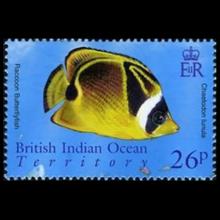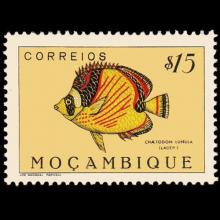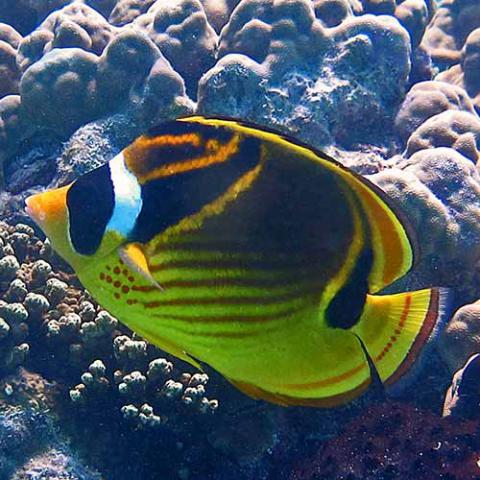NAMES
TAXONOMY
British Indian Ocean Territory
Issued:
Stamp:
Chaetodon lunula
Mozambique
Issued:
Stamp:
Chaetodon lunula
British Indian Ocean Territory
Issued:
Stamp:
Chaetodon lunula
Mozambique
Issued:
Stamp:
Chaetodon lunula
British Indian Ocean Territory
Issued:
Stamp:
Chaetodon lunula
Mozambique
Issued:
Stamp:
Chaetodon lunula
Genus species (Animalia): Chaetodon lunula
The raccoon butterflyfish (Chaetodon lunula), also known as the crescent-masked butterflyfish, lunule butterflyfish, halfmoon butterflyfish, moon butterflyfish, raccoon butterfly, raccoon, raccoon coralfish, and redstriped butterflyfish, is a species of marine ray-finned fish, a butterflyfish belonging to the family Chaetodontidae. It is found in the Indian and Pacific Oceans.
Taxonomy
Chaetodon lunula was first formally described as Pomacentrus lunula in 1802 by the french naturalist Bernard Germain de Lacépède (1756-1825) with the type locality given as "the Indian Ocean".[3] It belongs to the large subgenus Rabdophorus which might warrant recognition as a distinct genus. In this group, its closest relative is probably the very similar Red Sea raccoon butterflyfish or diagonal butterflyfish, C. fasciatus. Other close relatives appear to be the black butterflyfish, C. flavirostris), Philippine butterflyfish, C. adiergastos, and perhaps also the unusual redtail butterflyfish, C. collare. Although the coloration of this group varies greatly, they are all largish butterflyfishes with an oval outline, and most have a pattern of ascending oblique stripes on the flanks. Except in the red-tailed butterflyfish, there is at least a vestigial form of the "raccoon" mask, with a white space between the dark crown and eye areas.
Description
Chaetodon lunula can reach a length of 20 cm (nearly 8 in). These large butterflyfish have an oval outline, with a pattern of ascending oblique reddish stripes on the flanks and black and white bands over the face and eyes, similar to the "raccoon" mask (hence the common name). They show a black spot on the caudal peduncle and oblique yellow stripes behind the head. They have 10-14 dorsal spines and 3 anal spines.
Biology
Chaetodon lunula is a nocturnal species that usually lives in small groups. Adults feed mainly on nudibranchs and small invertebrates, but also on algae and coral polyps.
Habitat
This species prefers seaward reefs and shallow reef flats of lagoon, at a depth of over 30 meters.
Reference: Wikipedia



